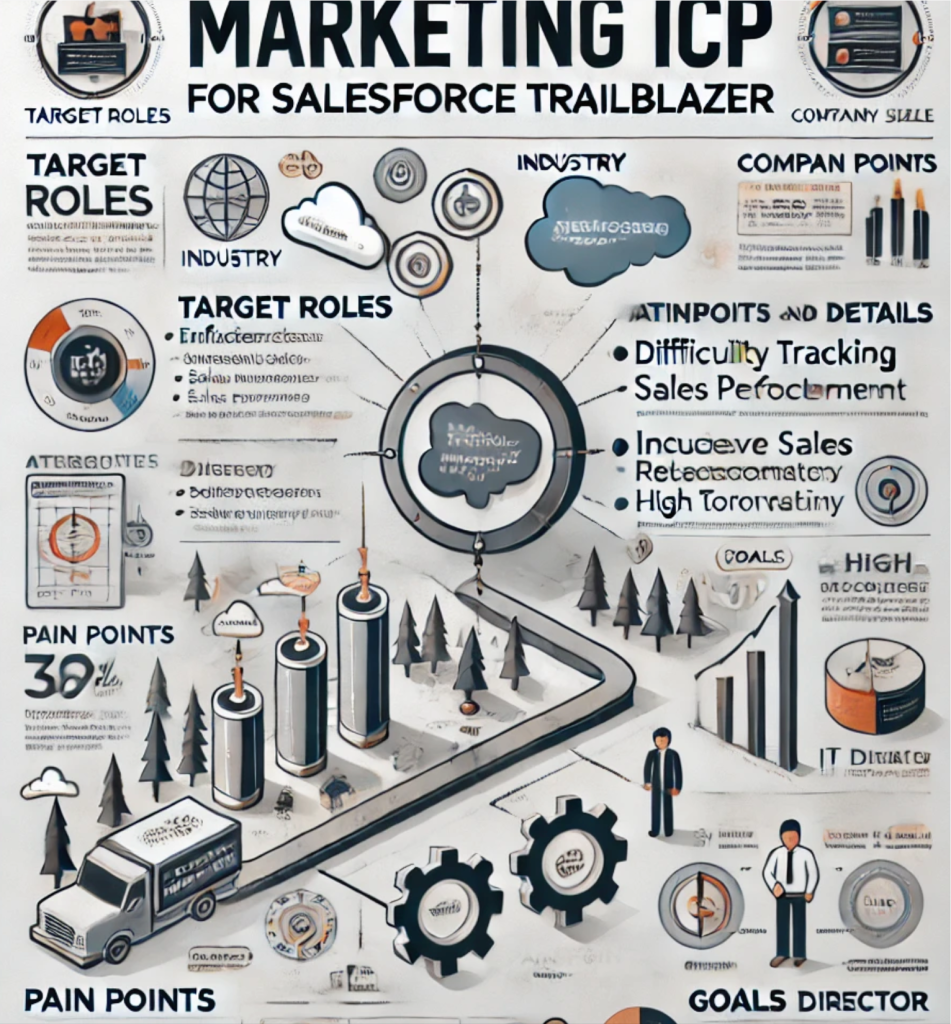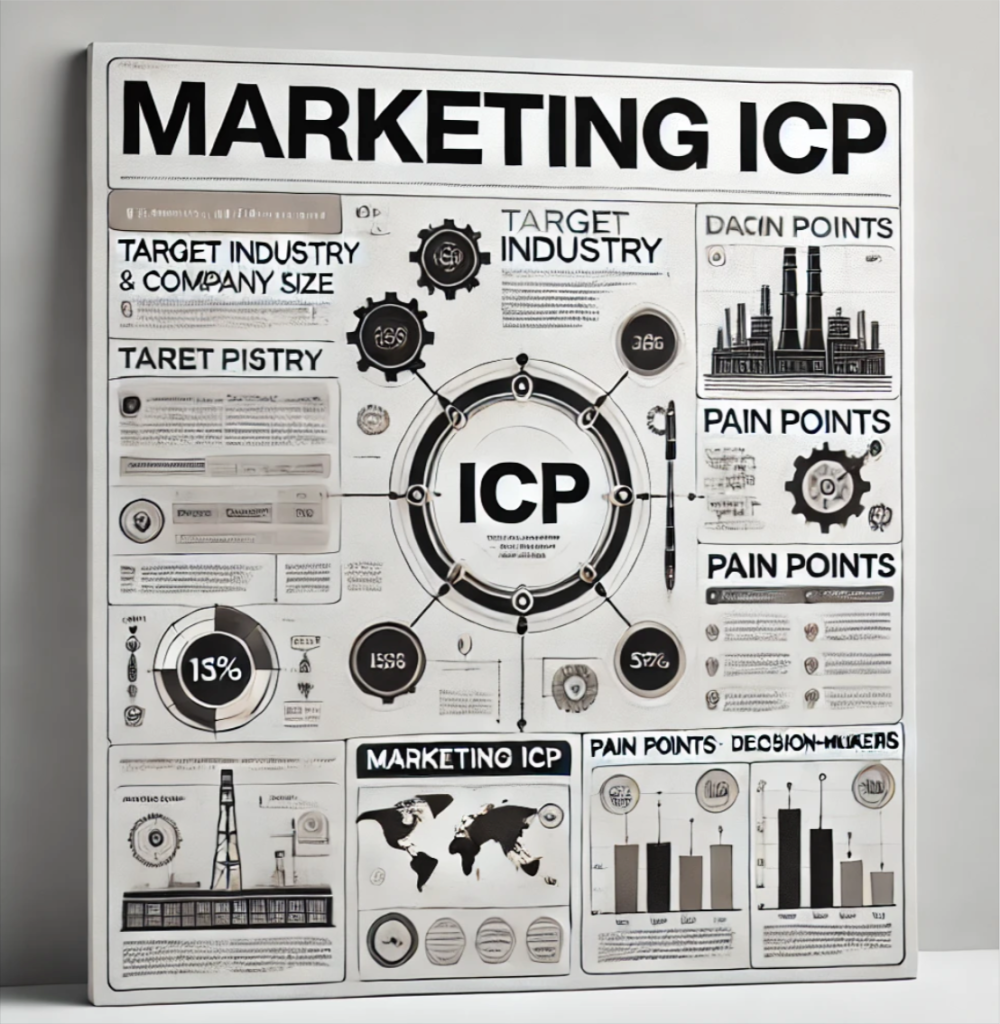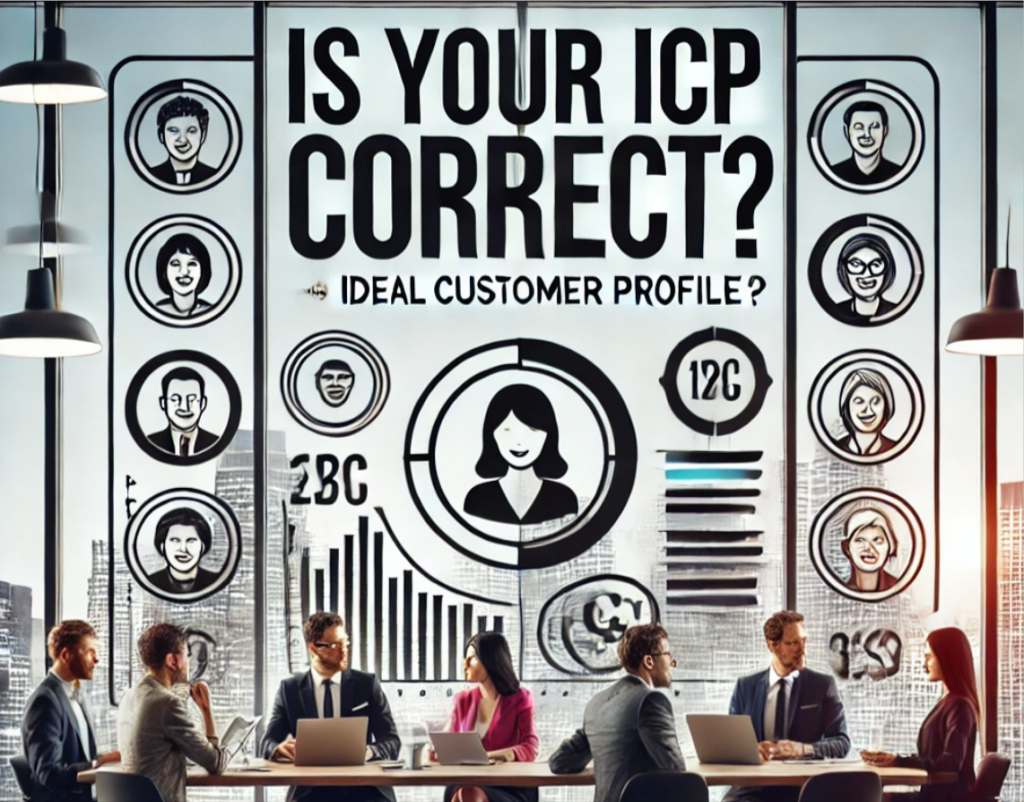Marketing ICP
Comprehensive walkthrough on building your first marketing ICP
What is marketing ICP?

Marketing ICP stands for “Ideal Customer Profile.” It is a detailed description of the type of customer that a business wants to target with its marketing efforts. The ICP outlines the characteristics and attributes of the ideal customer, including demographic information, firmographic data (company size, industry, etc.), behavioral traits, and pain points.
The purpose of defining an ICP is to help businesses focus their marketing strategies on the most valuable and relevant prospects, improving the efficiency and effectiveness of their marketing and sales efforts. By targeting customers who are most likely to benefit from and be satisfied with the product or service, businesses can achieve higher conversion rates, customer retention, and overall return on investment (ROI).
What is the proper way to identify marketing ICP for big B2B companies?
Identifying the Ideal Customer Profile (ICP) for a big B2B company involves a systematic approach. Here’s a step-by-step method:
- Analyze Existing Customers: Review your current high-value customers. Look at their company size, industry, location, and buying behavior to find common traits.
- Engage Sales and Customer Success Teams: Gather insights from teams that interact directly with customers. They can provide qualitative data on what makes a successful customer.
- Examine Market Data: Use market research and analytics tools to identify potential customers that match the profiles of your best existing customers.
- Define Firmographics and Technographics: Specify the ideal company size, industry, revenue, geographic location, and technology stack that your target customers should have.
- Identify Pain Points and Needs: Understand the challenges and needs of your ideal customers. Determine how your product or service addresses these issues better than competitors.
- Create Buyer Personas: Develop detailed personas that represent your ideal customers, including their roles, decision-making processes, and buying journeys.
- Validate and Refine: Continuously validate your ICP by comparing it with new high-value customers. Refine the profile based on new data and feedback.
How to apply marketing ICP in real life business?
Applying a marketing ICP (Ideal Customer Profile) in a real-life business context requires a strategic and integrated approach. First, it is essential to define the ICP based on thorough market research and data analysis. This involves identifying key characteristics such as industry, company size, geographic location, and specific challenges or needs that your product or service can address. By understanding these attributes, you can create a profile that represents the type of customer most likely to benefit from and invest in your offerings.
Once the ICP is established, the next step is to use it to guide your marketing campaigns. Tailor your messaging, content, and advertisements to speak directly to the needs and pain points of your ideal customers. This targeted approach ensures that your marketing efforts resonate more deeply with the audience you want to attract, increasing engagement and conversion rates.
Aligning your sales team with the ICP is crucial. Provide training and resources to help sales representatives identify and prioritize leads that match the ideal customer profile. This alignment allows the sales team to focus their efforts on the most promising prospects, improving efficiency and the likelihood of closing deals.
Product development should also be influenced by the ICP. Ensure that the features and benefits of your products or services are aligned with the needs and preferences of your ideal customers. This alignment makes your offerings more attractive and relevant, enhancing their appeal and competitive edge in the market.
Example of marketing ICP in real-life case study

An example of a marketing ICP for Salesforce, a leading B2B company in the CRM space, can be illustrative. Salesforce’s ideal customer profile might include mid to large-sized enterprises in various industries such as technology, finance, and healthcare. These companies typically have annual revenues exceeding $50 million and employ more than 200 staff members. Geographically, they operate globally but have significant presences in North America and Europe.
Their key challenges include the need for robust customer relationship management systems, streamlined sales processes, and integrated marketing automation. These businesses value digital transformation and are keen on adopting cutting-edge technology to stay competitive. Decision-makers within these organizations are often C-level executives, VPs of Sales, and IT Directors who are looking for scalable, customizable, and secure CRM solutions.
Salesforce tailors its marketing messages to address pain points such as improving sales productivity, enhancing customer engagement, and providing actionable insights through data analytics. The content strategy focuses on showcasing success stories, case studies, and detailed product demonstrations that highlight Salesforce’s capabilities in solving complex business problems.
By targeting this specific ICP, Salesforce can streamline its marketing efforts, ensuring that its campaigns resonate deeply with the needs and objectives of its ideal customers. This approach not only improves lead quality but also increases the efficiency of the sales team, leading to higher conversion rates and better customer retention.
Enjoying the ride and want to connect?
Get in touch with me using that red button and we can discuss what you have in mind!
Use this form to book a Call with me
The marketing ICP creation process

Creating a marketing Ideal Customer Profile (ICP) involves a detailed process that helps businesses understand and target their most valuable customers. Here’s a step-by-step breakdown of this process in nine core steps:
- Identify Business Objectives: Begin by understanding your business goals. Are you aiming to increase sales, improve customer retention, or expand into new markets? Clear objectives will guide the development of your ICP.
- Collect Customer Data: Gather data from existing customers using CRM systems, surveys, and customer feedback. Look at demographic information, purchase history, and engagement patterns to identify common traits among your best customers.
- Segment Your Audience: Divide your customer base into segments based on the data collected. Common segmentation criteria include industry, company size, location, and revenue. This helps in understanding different customer needs and behaviors.
- Analyze Behavioral Data: Examine how different segments interact with your products or services. Look for patterns in purchase frequency, product usage, and customer support interactions. This analysis helps in identifying high-value customers.
- Identify Pain Points and Needs: Understand the specific challenges and needs of each customer segment. This involves talking to sales and customer support teams, conducting interviews, and reviewing customer feedback to pinpoint common issues your product solves.
- Define Demographic Attributes: Specify the demographic attributes of your ideal customers, such as job titles, company size, industry, and geographic location. These attributes help in targeting your marketing efforts more precisely.
- Create Customer Personas: Develop detailed customer personas that represent your ideal customers. Each persona should include demographic information, pain points, goals, and preferred communication channels. Personas make it easier to tailor marketing messages.
- Validate with Sales and Marketing Teams: Collaborate with your sales and marketing teams to validate the ICP. Ensure that the defined profiles align with real-world customer interactions and feedback. Adjust the profiles based on input from these teams.
- Test and Refine: Implement the ICP in your marketing and sales strategies and track the results. Monitor key performance indicators (KPIs) such as lead quality, conversion rates, and customer acquisition costs. Use this data to refine and improve your ICP over time.
How to understand if the ICP is correct?

Measuring the effectiveness of a marketing Ideal Customer Profile (ICP) and determining if it is correct involves several key metrics and evaluation methods. One primary method is analyzing the quality of leads generated. High-quality leads should align closely with the attributes defined in your ICP, leading to higher conversion rates. Monitoring conversion rates from lead to customer is essential. If the conversion rate is low, it might indicate that the ICP needs refinement.
Customer acquisition cost (CAC) is another critical metric. A well-defined ICP should help lower CAC by targeting the right audience, ensuring marketing efforts are efficient. An increase in customer lifetime value (CLV) is also a positive indicator that your ICP is targeting customers who provide long-term value to your business.
Regular feedback from sales teams is vital. Sales teams interact directly with potential customers and can provide insights into whether the leads match the defined ICP. If sales teams report that leads are not a good fit, it may be time to reassess the ICP.
Customer retention rates can also signal the effectiveness of an ICP. Higher retention rates suggest that the customers acquired fit well with your product or service offerings. Analyzing the engagement levels of acquired customers is another method. High engagement indicates that the ICP is effectively identifying customers who find value in your offerings.
Comparing revenue growth before and after implementing the ICP can provide insights into its effectiveness. An increase in revenue growth suggests that the ICP is helping to attract profitable customers. Regularly reviewing and updating the ICP based on these metrics and feedback ensures it remains accurate and effective.
Finally, conducting periodic market research and customer surveys can validate the accuracy of the ICP. These methods provide direct feedback from your target audience, ensuring that the ICP remains aligned with market needs and trends. By consistently measuring these factors, businesses can determine the effectiveness of their marketing ICP and make necessary adjustments to optimize their targeting strategies.
Conclusion
Using these materials will significantly enhance your understanding of your customers by providing structured methods for identifying, targeting, and engaging them effectively.
Implementing strategies like creating a marketing ICP ensures your efforts are directed toward the right audience, leading to higher conversion rates and lower customer acquisition costs. By continuously measuring and refining your approach, you’ll foster deeper customer relationships and drive long-term value. Stay ahead of market trends, optimize your marketing efforts, and achieve better business outcomes.
Subscribe to my blog for more insights on mastering customer understanding and improving your marketing strategies.
Also Check Out Some of The Services That I Provide:
Audit
of your website, perfomance and brand campaigns, as well analysis of CJM and Funnel Management.
Consulting
Detailed recommendations based on analysis with handpicked tools and solutions.



